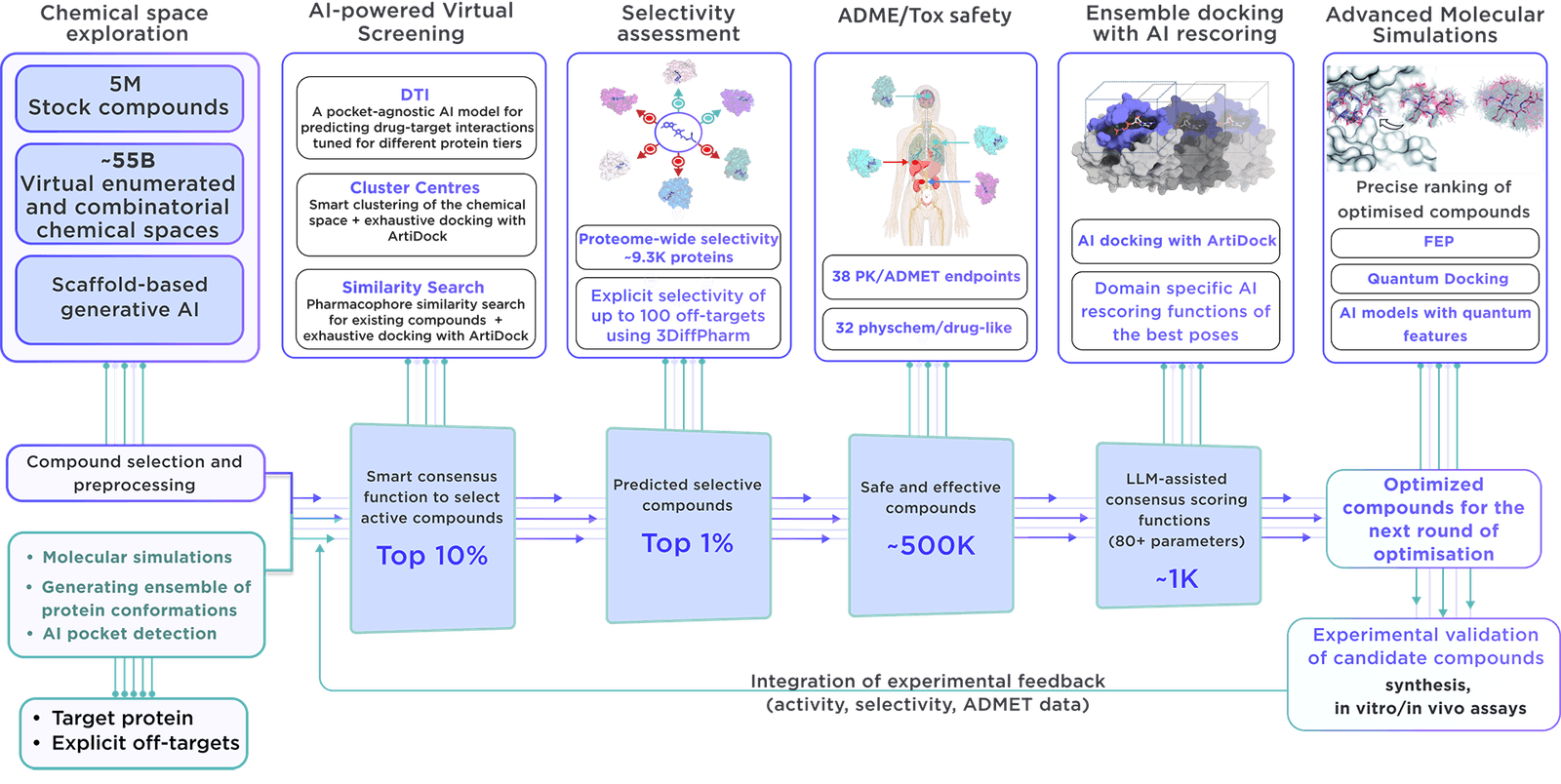Focused On-demand Libraries - Receptor.AI Collaboration
Explore the Potential with AI-Driven Innovation
This comprehensive focused library is produced on demand with state-of-the-art virtual screening and parameter assessment technology driven by Receptor.AI drug discovery platform. This approach outperforms traditional methods and provides higher-quality compounds with superior activity, selectivity and safety.
Our selection of compounds is from a large virtual library of over 60 billion molecules. The production and distribution of these compounds are managed by Reaxense.
Contained in the library are leading modulators, each labelled with 38 ADME-Tox and 32 physicochemical and drug-likeness qualities. In addition, each compound is illustrated with its optimal docking poses, affinity scores, and activity scores, giving a complete picture.
We use our state-of-the-art dedicated workflow for designing focused libraries.
By deploying molecular simulations, our approach comprehensively covers a broad array of proteins, tracking their flexibility and dynamics individually and within complexes. Ensemble virtual screening is utilised to take into account conformational dynamics, identifying pivotal binding sites located within functional regions and at allosteric locations. This thorough exploration ensures that every conceivable mechanism of action is considered, aiming to identify new therapeutic targets and advance lead compounds throughout a vast spectrum of biological functions.
Key features that set our library apart include:
- The Receptor.AI platform integrates extensive information about the target protein, such as historical experiments, academic research, known ligands, and structural insights, thereby increasing the likelihood of identifying highly relevant compounds.
- The platform’s sophisticated molecular simulations are designed to discover potential binding sites, ensuring that our focused library is optimal for the discovery of allosteric inhibitors and binders for cryptic pockets.
- With over 50 customisable AI models, verified through extensive testing in commercial drug discovery and research, Receptor.AI is efficient, reliable, and precise. These models are essential in the production of our focused libraries.
- Receptor.AI not only produces focused libraries but also provides full services and solutions at every stage of preclinical drug discovery, with a success-based pricing structure that aligns our interests with the success of your project.
Receptor.AI
Q14152
UPID:
EIF3A_HUMAN
ALTERNATIVE NAMES:
Eukaryotic translation initiation factor 3 subunit 10; eIF-3-theta; eIF3 p167; eIF3 p180; eIF3 p185
ALTERNATIVE UPACC:
Q14152; B1AMV5; B4DYS1; F5H335; O00653; Q15778

